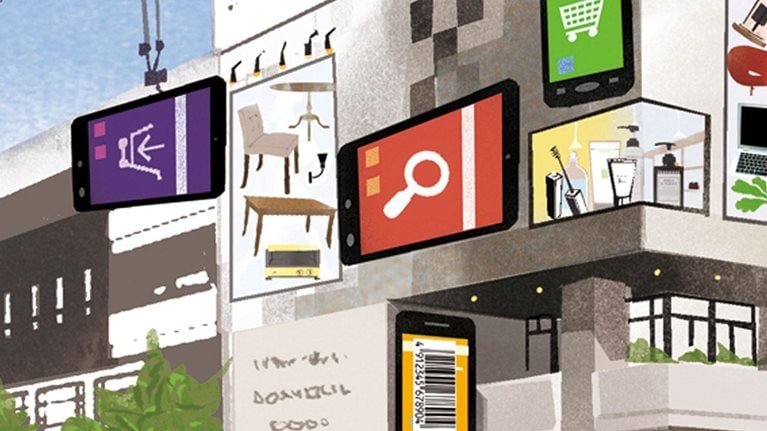Just because Europeans aren’t buying groceries online en masse doesn’t mean they don’t want to. In fact, many of them love the idea of saving time by not having to trek to a supermarket, push a shopping cart down aisle after aisle, then wait in the checkout line. The convenience of shopping for groceries online is alluring.
But convenience isn’t everything. Consumers will shop for groceries online only if the offer is right: they’re not willing to sacrifice the price, quality, and range of products that they’ve grown accustomed to in the supermarket, and they won’t put up with inconvenient delivery or pickup arrangements. To date, few European retailers have given consumers a compelling reason to switch from the neighborhood grocer to the Web.
That could soon change. Based on our latest research, we believe the advent of the “click and collect” model—which allows customers to place orders online and pick them up at a store or other designated location—could entice more retailers, as well as more consumers, to the online-grocery space.
Nevertheless, getting into e-commerce isn’t a trivial matter for a grocery retailer. Will the payoff be worth the investment? Our research, which included a survey of more than 4,500 European consumers in France, Spain, and the United Kingdom, as well as a global scan of best practices in online grocery, strongly suggests that the answer is yes—for retailers that move quickly. Online grocery will play out differently in each country and for each retailer depending on margins, current market share, and other factors, but in general the value at stake is high and the market will change rapidly. Only early movers will win—and only if they have an outstanding value proposition, a relentless focus on profit optimization, and a willingness to place big strategic bets.
Poor supply hampers demand
With a few exceptions (such as in the United Kingdom, where Tesco and pure-play retailer Ocado have made assertive moves), Europe’s online-grocery market has been stuck in a vicious cycle: poor supply drives low demand, which in turn justifies the poor supply.
Many retailers are put off by the economics of the business: selling groceries online means taking on additional costs—in labor, delivery vehicles, and fuel—that are higher than the fees customers are willing to pay for delivery (which, according to our research, is between €4 and €7 per transaction, depending on the market). Profitability can thus seem an unattainable goal. This is particularly problematic for retailers in markets where gross margins are lower and labor costs are higher relative to the United Kingdom.
Some of Europe’s grocery retailers have ventured into online selling, but in general their efforts have been tentative and half-hearted and thus have failed to win customers; their underfunded Web sites feature mostly limited and overpriced assortments. In France, only about a quarter of consumers who have shopped online for groceries once continue to do so regularly. Lapsed online shoppers told us that reduced assortments, higher prices, and additional fees had driven them back to supermarkets (Exhibit 1).
Lapsed online shoppers say price and assortment are critical.

Another factor keeping demand low is consumer skepticism about product quality. In all the countries we studied, consumers who haven’t yet tried grocery shopping online said their biggest concern is not being able to see or touch the actual products before buying. They want reassurance that their groceries will be fresh and high quality—no bruised fruit, no wilting lettuce.
There is, however, latent demand. In France, 33 percent of consumers who have never bought groceries online say they would “probably” or “certainly” begin to do so within the next six months if the service were available in their area. In Spain, that figure is even higher, at 49 percent. Breaking the vicious cycle will require just one retailer in every market to step up and take the lead.
Click and collect: A tipping point?
It appears that such a development will happen soon. A few European retailers, notably in the French market, have recently launched a service that just might mark the tipping point for online grocery: “buy online, pick up in store,” or click and collect. This model gives retailers easier entry into the online-grocery space, since it has much less daunting economics than home-delivery service. Our analysis shows as much as a 30 percent difference in margin, making it easier for a retailer to justify the investment (Exhibit 2). Furthermore, pickup does not require scale in the same way delivery does and is better adapted to basket-size variations (because larger pickup orders don’t necessitate more delivery trucks).
The economics of pickup can be substantially more attractive.

And it’s a service that appeals to consumers. A significant fraction of Europeans are at least as favorably disposed toward pickup as they are toward delivery. Many survey respondents said they pass a grocery store on their daily commute anyway, and they don’t like having to wait at home for a delivery. That said, given the distinct consumer segments preferring delivery over pickup, winning retailers will most likely offer both options, at least in densely populated areas (Exhibit 3).
There are distinct consumer segments for pickup and delivery, so a mixed model is advisable.

Recent developments in France illustrate how pickup can fuel explosive growth: since 2006, retailers have established approximately 1,000 pickup points in the country. This pace hasn’t been seen since the boom in hypermarkets in the 1970s. And pickup has tapped into latent demand: of French consumers who now regularly buy groceries online, 42 percent just began doing so in 2011.
Granted, at the industry level, the rise of the pickup model isn’t all good news. A shift from physical stores to online will reduce margins: retailers will have to take on the additional costs of labor and picking long before they can shed operating costs by shuttering physical stores. Furthermore, not all online sales will be additive; a significant fraction of online sales will cannibalize the offline business.
But online grocery can be a boon to early movers. As markets from the United Kingdom to France to Switzerland have demonstrated, a strong online offer can win customers away from competitors and capture additional market share, compensating for lower margins. Our research shows that consumers tend to be disloyal as they learn to shop across channels, with 64 percent switching preferred retailers when migrating from brick-and-mortar stores to the Web (Exhibit 4).
Shoppers switch retailers when they switch channels.

How to be a market shaper: Three principles
Once a retailer makes an assertive first move in online grocery, others are likely to follow suit. But at that point, the business case for investing in online grocery will be a matter of defending market share and preventing further losses—not delivering incremental profit. In a rapidly changing market, waiting can be costly.
Our experience working with retailers across Europe, combined with our proprietary consumer research, brings to light three things that will set the market shapers apart: a truly outstanding online offer, a disciplined insistence on profit optimization, and a strategic approach to online grocery.
‘Good enough’ isn’t
In the online world, there’s a vast difference between a “good enough” proposition and an outstanding one—and only the latter will attract and retain customers. In each of the countries we studied, the most successful online-grocery player is markedly better at converting consumers into customers at each stage of the purchasing funnel (Exhibit 5).
Performance varies wildly, with one player setting the bar in each market.

Unfortunately, some of Europe’s online-grocery stores aren’t even “good enough” when it comes to Web design and functionality. Features that are a matter of course in more mature markets like the United Kingdom—high-quality photographs of products; clear labeling of brands, prices, and pack sizes; and smart search algorithms, including spelling autocorrections and “did you mean” suggestions—appear inconsistently or not at all on grocery Web sites in Europe.
Retailers must recognize that the online user experience is even more important in grocery than in nonfood categories because of the number of items in a typical grocery transaction. Grocery shopping is laborious and time-consuming on a badly designed, poorly functioning Web site. First-time users won’t return to a site that they find difficult to navigate.
And because convenience is a core element of online grocery’s value proposition, causing any inconvenience to the customer is almost a guarantee of losing that customer forever. The consequences of a retailer’s poor performance in online grocery—whether on the Web site itself or as part of the delivery or pickup arrangements—are likely to be highly frustrating for customers: a site crash in the middle of an order can mean the customer has to add each item to her shopping cart all over again, unclear labeling on the site can lead a customer to order the wrong items, a late delivery can ruin dinner plans.
Convenience is important, but quality, assortment, and price also matter tremendously. The value proposition—and, of course, the marketing messages—of online grocers should reinforce these elements. FreshDirect’s success in Manhattan, for instance, has been due not only to the convenience of its delivery service but also to an outstanding value proposition: higher quality at lower prices.
Relentless profit optimization is key
Online grocery can be profitable, as the best performers have shown—but only through maximum operational and marketing efficiency. In our scan of online-grocery operations worldwide, we came across wide variations among the best and worst performers on a range of operational metrics. Take picking costs as an example. The top performers, by implementing best practices such as the use of easy-to-maneuver picking carts and careful monitoring of pickers, have boosted their picking speeds to three times those of the worst performers—the difference between profit and loss.
The Web site’s “engine” can also drive profit. Many online-grocery sites in Europe today are missing critical basket-building features such as contextual product recommendations (based on the consumer’s previous purchases, for instance), product-by-product access to recipes, or the ability to recreate a prior order with a single click. Such features can yield a 5 percent bump in average basket size—again, the difference between a profitable business and a money-losing operation.
The doctrine of ruthless optimization also applies to marketing spending. Discount-driven customer acquisition is prevalent; many online grocers offer 10 percent off the first order. Retailers must understand the customer lifetime value of each customer segment in order to determine the right level of investment. One leading European online grocer, for example, sets delivery fees based on basket size and time since last order, giving shoppers incentives to buy more and buy often.
Playing strategically means betting big and being agile
Retail leaders who believe in the potential of online grocery must be prepared for the possibility of internal opposition; they will have to make a very strong case to management and shareholders. No retailer will shape the online-grocery market unless it is willing to go “all in.” An incremental approach—store by store, for instance, or one product category at a time—will fail.
Once a retailer decides to invest, it faces important decisions about the fulfillment model and last-mile operations. For example, picking can be done in stores, small dedicated warehouses, large fulfillment centers, or some combination of these options. Customers could receive their purchases via home delivery or by picking them up inside the store, in a store’s parking lot, at a dedicated pickup facility, or at a designated third-party location (such as a gas station). Each model will have different economics and investment requirements depending on the retailer’s distribution footprint, price positioning (discount versus premium), scale, geographic concentration of sales, and competitive environment.
Playing strategically also means optimizing for local contexts, taking into account the target customers, economics, competitive landscape, and level of cannibalization (that is, how much online sales will eat into the offline business) in each neighborhood. The right model for an urban neighborhood dominated by competitors’ stores will be different from the right model for an affluent suburb in the retailer’s core market.
We believe that in most markets, large retailers will very soon invest in online grocery. However, there’s little clarity about how much margin will be on the table in the long term, how much consumer demand will materialize for pickup versus delivery, and how aggressive—and successful—new entrants will be in each market. Retailers must assume that the business environment will evolve, plan for a range of scenarios, and be prepared to adjust their offer accordingly. Tesco, for instance, began with in-store picking, then switched to a dedicated-warehouse model; it began with only a delivery service but now offers click and collect as well. The ability to anticipate and adapt to changes in the marketplace will be crucial.
New formats in grocery come along infrequently, and when they do, they tend to take incumbents by surprise—leading to a significant redistribution of market share. In most developed markets, online grocery is at a tipping point. Only retailers that move quickly and assertively can shape the market and win.



